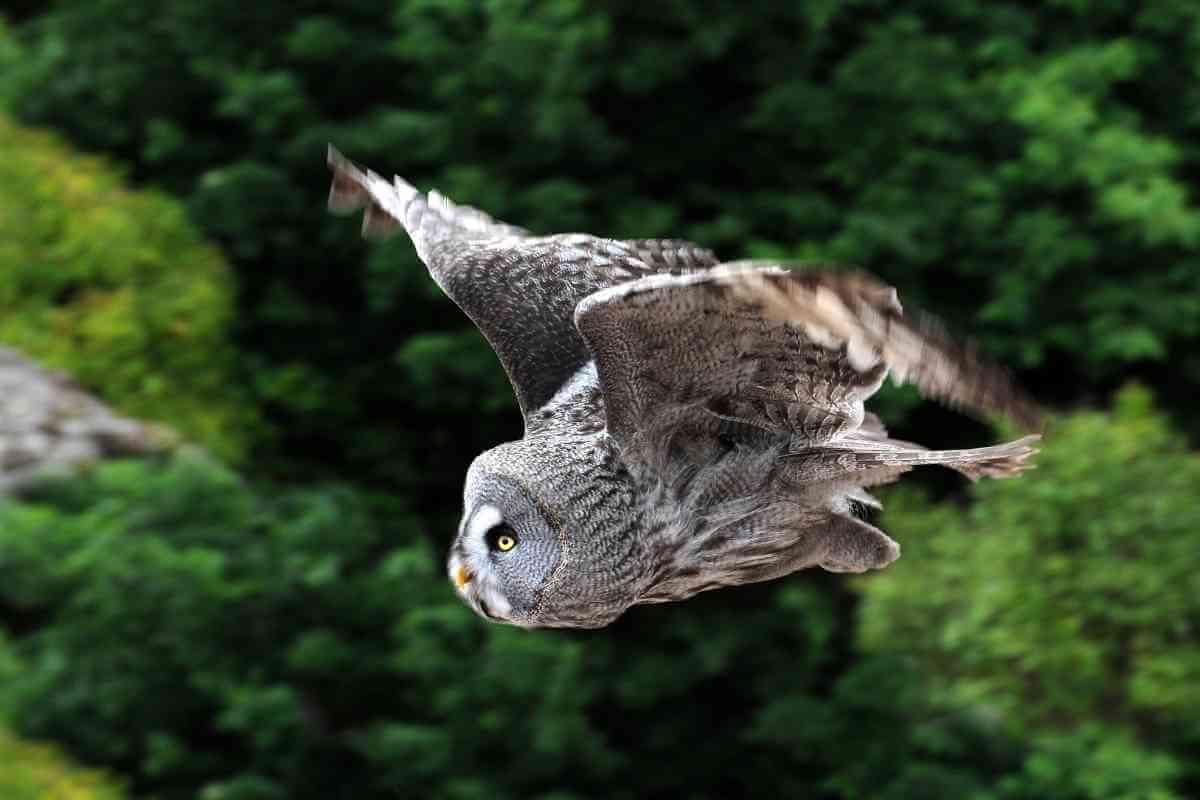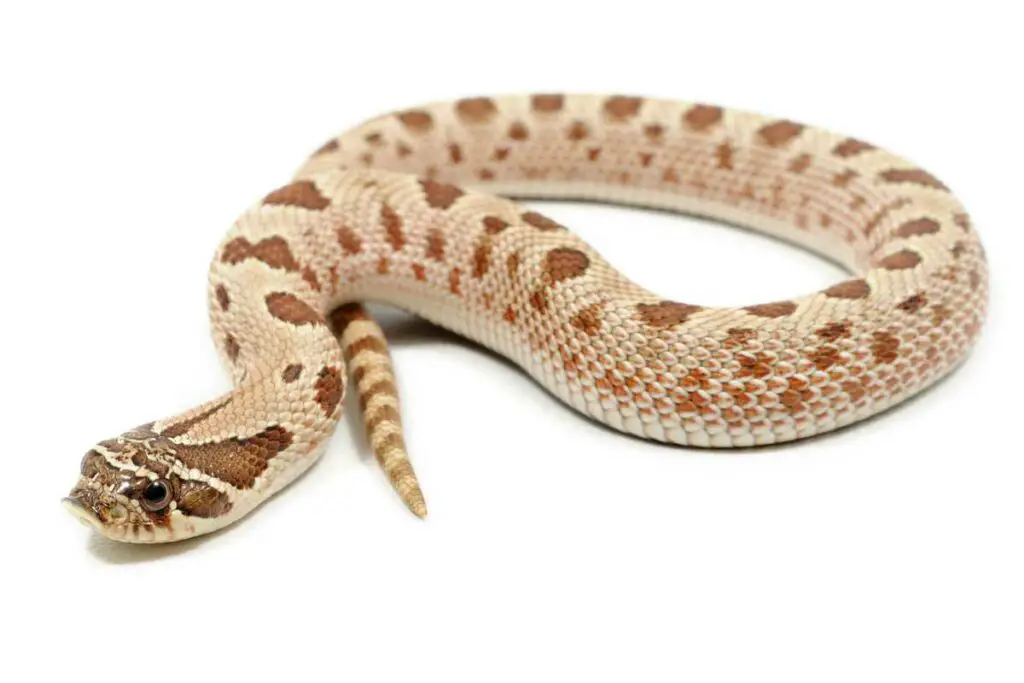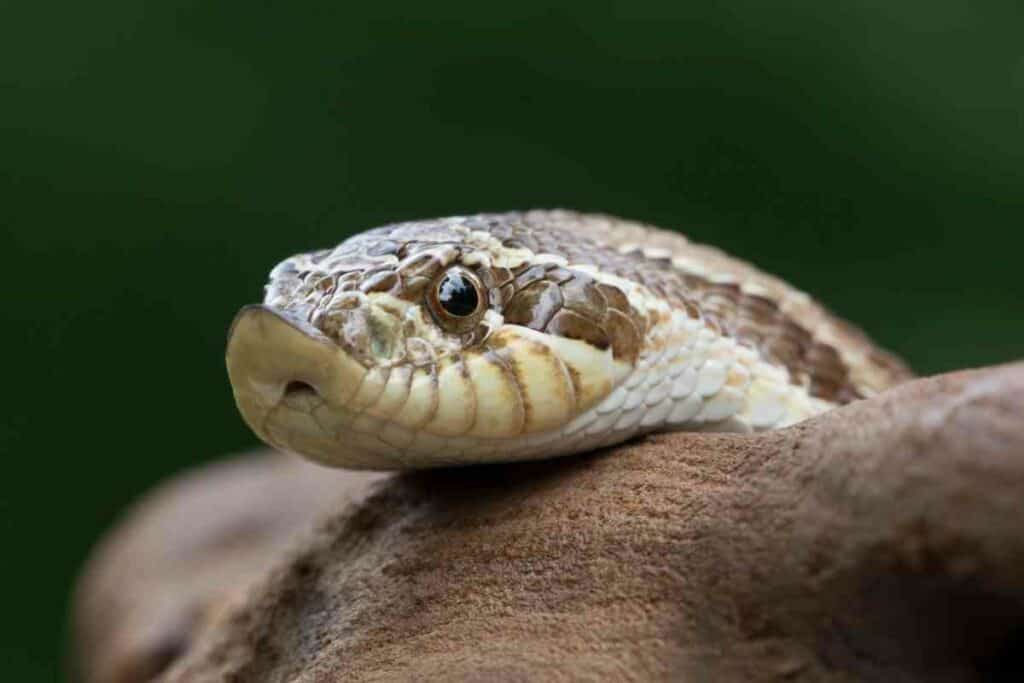There are over 200 species of owls.
Even though most owls are nocturnal, not all of these birds of prey are active exclusively at night.
However rare, there is a chance that you can witness a few species of these upright, broad-headed birds perched atop a tree branch, waiting to pounce on their prey as the sun shines.

You may also be able to hear the distinctive hoot of an owl during daylight.
But, the real question is, why do owls hoot after sunrise?
You can hear diurnal owls hooting during daytime (or crepuscular owls at dusk and dawn) as a means of communication. A hoot can also be used to define territory or to warn off impending attacks by predators. Since daytime owls are pretty rare, people sometimes confuse another bird’s call with an owl’s hoot – usually a mourning dove’s.
While nocturnal owls return to resting places to sleep off busy hunting nights, diurnal owls are awake and active during the daytime.
Table of Contents
What Are Varying Kinds of Diurnal Owls?
We have already discussed that if you hear an owl hooting in the daytime, it must be a diurnal owl.
A few owl species are awake during the day, but most of them are active at night.
Here are some of the owls active during the day.
1. Burrowing Owl
Burrowing owls are small and, unlike many other birds of their kind, most energetic and active during the day.
However, they are not very fond of the midday heat. Burrowing owls are very terrestrial, sometimes chasing their prey on the ground.
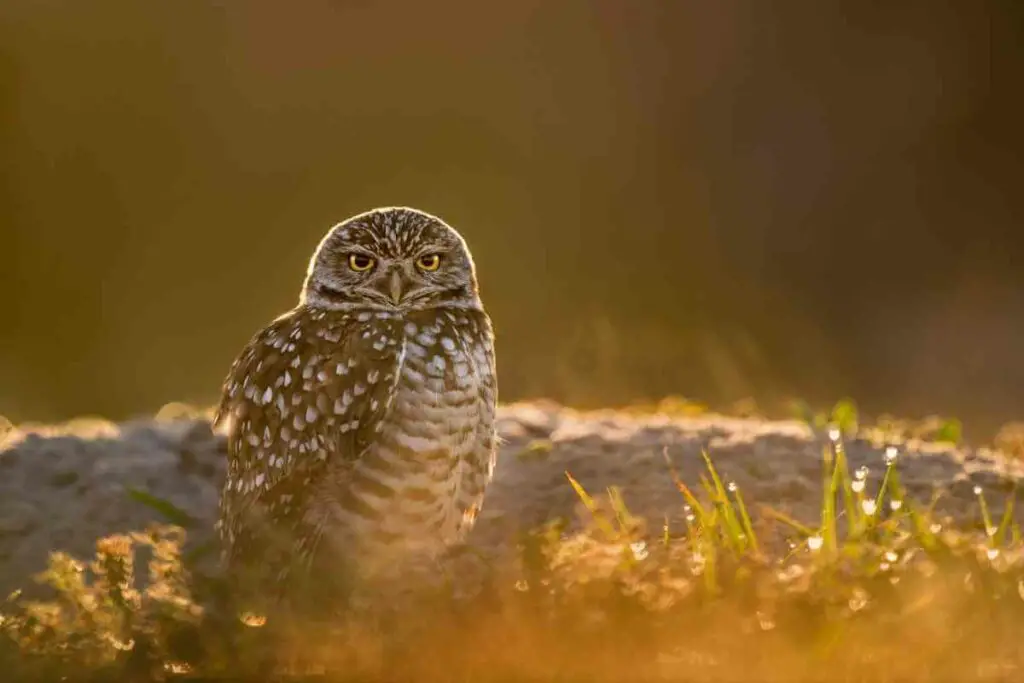
As a result, they are often killed by moving vehicles and various other predators.
As the name suggests, burrowing owls live in burrows, similar to those dug by prairie dogs.
Please note that burrowing owls are not particularly vocal, despite making various cooing and rattling sounds.
They only make hooting sounds when they feel threatened or when mating.
2. Short-Eared Owl
The short-eared owl is another diurnal bird with tiny ears that are hard to see from a distance.
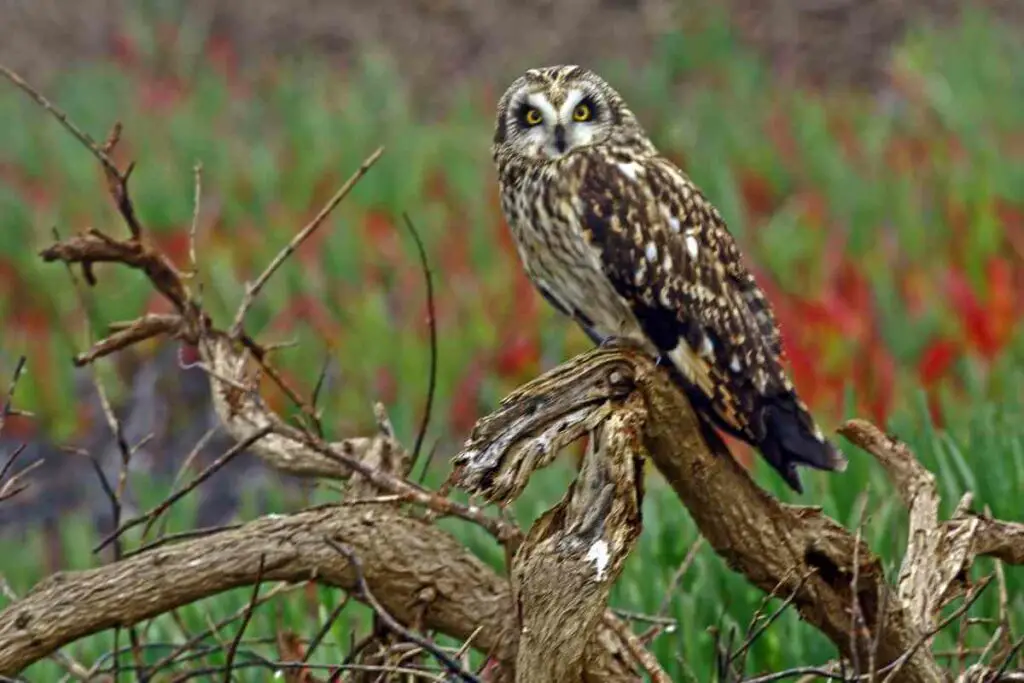
They fly with stuff strokes, close to short vegetations. These owls are often found on the ground or perching on low branches.
The short-eared owl’s primary call consists of a series of hooting sounds, often heard by males during mating.
Other than that, the owls are not very vocal. However, you can listen to the scream and bark when defending their territory.
3. Snowy Owl
True to its name, this owl is snow-white, with brownish markings on the females.
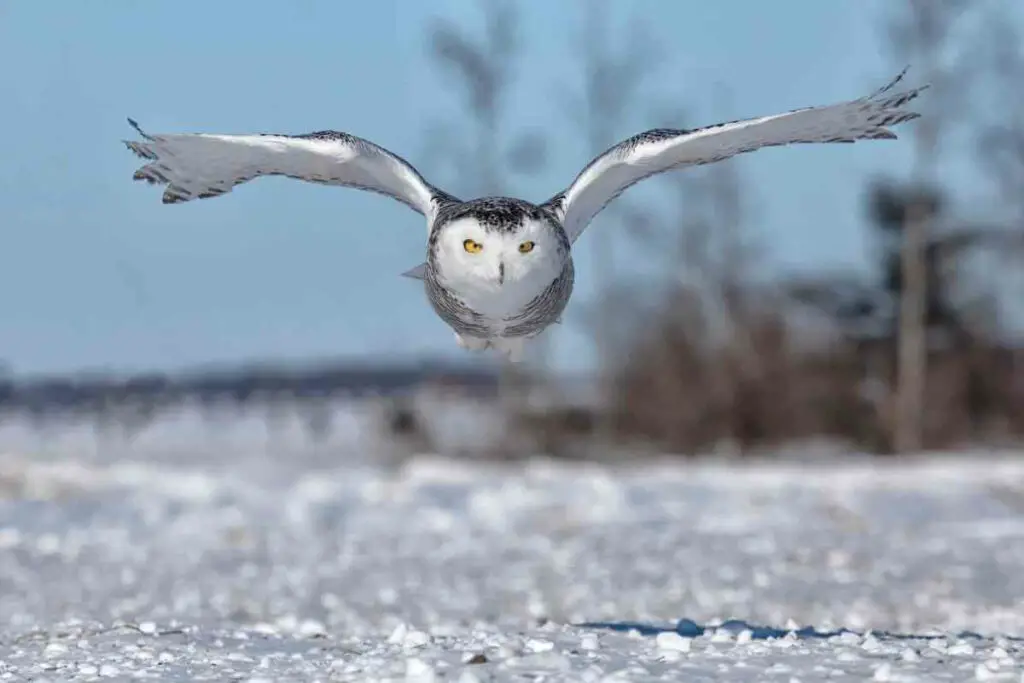
The males, however, are pure white and get whiter as they age.
This owl loves to hunt during the day all year, but even more so in summer. They are usually most lively at dusk and dawn.
Have You Noticed: Their hooting sound is rather rough and raspy. Sometimes, these would make up to six consecutive hooting sounds. You can also hear them hissing and whistling, should they find themselves threatened or defending their territory.
4. Northern Pygmy-Owl
The Northern pygmy owl is active at dusk and dawn, as well as during the day.
Adult birds are merely 15 – 17 cm in length, despite having relatively longer tails. The feisty owl may be small, but the daytime hunts primarily consist of songbirds.

They sit atop the tallest trees while hooting to mark their territory. Their territorial call is usually confusing as it is tough to see these birds due to their color and small size.
The Northern pygmy has a quick, shrill call that is often followed by high-pitched toots that male and female birds make simultaneously.
5. Northern Hawk Owl
The diurnal Northern hawk owl has symmetrical ear openings rather than asymmetrical openings.
Thus it is believed that this daytime hunter relies on its sight to catch prey rather than its hearing.
The hearing because of the placement of the ear openings is not considered to be as superior as some other owl species like the Great Gray owl.
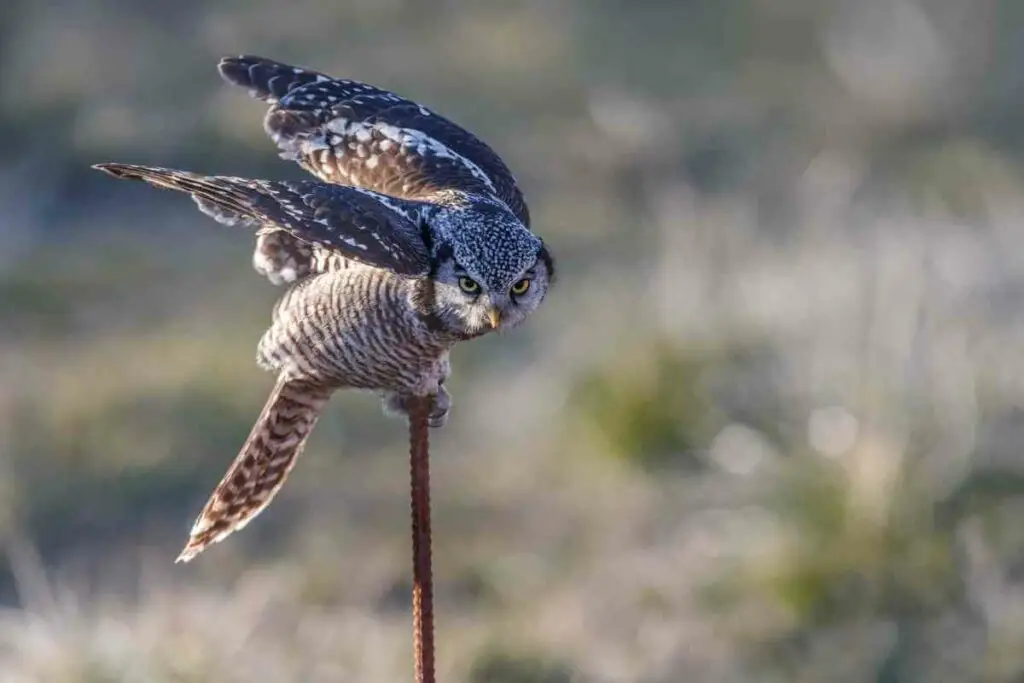
However, this in no way means that these owls cannot hear well. In fact, they can make out prey buried deep in the snow (up to 1 foot) just by sound.
Unlike many other daytime owls who are also active at twilight and even night, the Northern hawk owl is only active during the daytime.
The male song is a quick whistle that sounds like a fast “ululululul,” whereas the female song is much shorter with a more hoarse sound.
What Are Different Types of Owl Hoots?
Not all hooting sounds are the same.
Based on why the owl is hooting, it can make various sounds, from low, raspy grunts to screeches, barks, and screams.
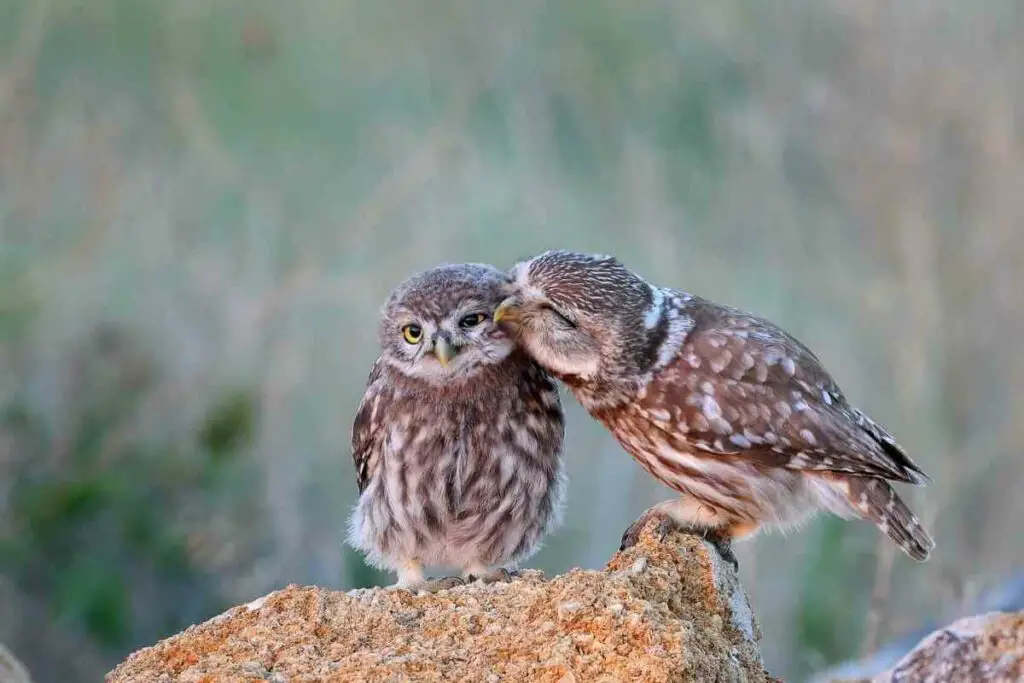
When a male owl is out to showcase its machoness, the hooting sounds are much longer and louder than mating calls.
Like male and female northern pygmies hooting, duets are usually shorter consecutive sounds.
For Example: They also produce a quick note sound, traditionally made when two owls come in contact. Thus, this “inspection call” means communication to inform the owl of the other’s arrival.
Which Birds Sound Like Owls?
While owls are active during the daytime, their numbers are relatively low.
In addition, the landscape also plays a massive role in whether or not owls can be heard in urban areas during the day in the first place.
Therefore, it is very likely that the cooing and hooting you hear during the daytime is not from an owl at all.

The most common bird call confused with an owl is from a Mourning Dove.
The Mourning Dove’s call is very resonant, and for someone without much knowledge of birds, it is extremely easy to mistake it for an owl.
Since owls make many other sounds than just the traditional hoot, other birds that may sound like these, mainly nocturnal birds, are nightjars and jays.
Bottom Line
Diurnal owls can hoot during the day for several reasons, including defensive hooting or warning other birds from entering their territory.
They also hoot to communicate with other owls or when they feel they are in danger from a predator. Some owls can be heard just after sunrise and before sunset – these species are crepuscular.
However, there is a chance that any daytime hooting you may hear does not belong to an owl at all but rather a mourning dove.
Despite the likely confusion, there are owls active during the day, a fact not known by many people.

